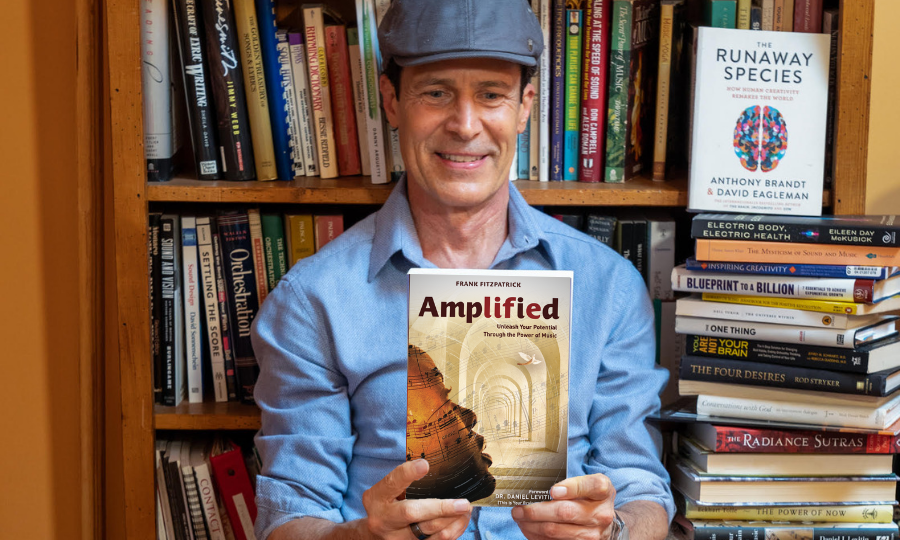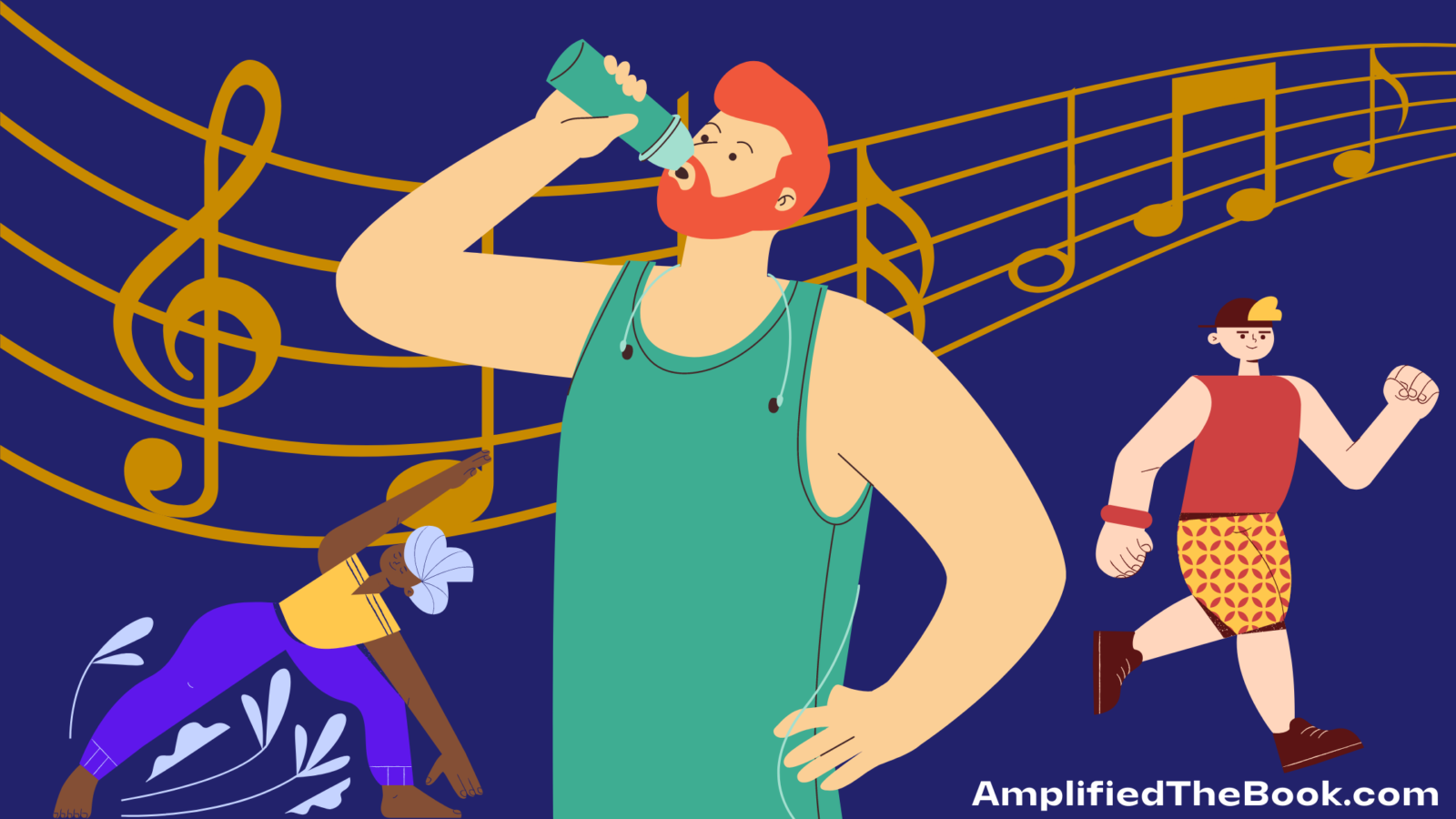Tell me what you listen to, and I’ll tell you who you are.
Tiffanie DeBartolo
As part of my workshops, I teach participants how to build Power Playlists. I recommend this activity to anyone interested in creating a powerful, portable resource that can enhance, prolong or alter your current state. A Power Playlist can help optimize your life by creating higher levels of performance, creativity, personal fulfillment and well-being — all while having fun.
Rather than just a collection of songs you like, a Power Playlist is an intentionally curated selection of personalized music designed to help you achieve a desired state of being. You can also use playlists to connect more deeply to yourself and others, fulfill your potential and enhance memory, focus and creativity.
F.I.R.M. – The Primary Colors of Power Playlists
So, what kind of playlist should you make? The goal here is to help you use music to optimize your life and fulfill your true potential. I recommend starting with four different playlists to help achieve specific psychological and emotional states. Using the acronym FIRM to remember the intention, you can design each playlist to help you achieve one of the following moods or states:
- Focus: to help tune out distractions, temper emotional highs and lows, or support focus while working or studying
- Inspiration: to create more enthusiasm, connection, and passion; help you feel better about life; accomplish something meaningful; or take on challenges
- Relaxation: to help you slow down and relax, relieve stress and promote healing, support meditation and self-reflection, enjoy a good meal or prepare for a restful sleep
- Motivation: to get you physically up and moving, for exercise or dance, or to pump some energy into a party, long drive, workout or workspace.
How to Build a Power Playlist
With the variety of streaming programs available, like Spotify or Apple Music, the creation of personalized playlists has become relatively simple. Thanks to years of encoding efforts (tagging the world’s libraries of music and creating classification tags), along with the development of AI engines and machine learning, software can help identify and recommend personal music preferences with greater ease and sophistication.
The more you use a particular program, the better the recommendation systems typically work. In addition to recommending music based on a broad set of your personal parameters, these programs’ libraries are highly searchable by categories like emotional mood, tempo, lyrical message, genre, topic, artist and more.
So, if you are drawing a blank on what music you want on your Power Playlists, these programs can help. For example, if you are building a list for Focus — something to play in the background while you work — you can simply enter “music for focus” into a Spotify search to view several options. If you know you like piano music or classical music, for example, you can narrow your search to “focus piano.”
It can be helpful as well to use a recommended playlist as the foundation for a Power Playlist and then edit and refine as you find out what works. You might hear a particular artist you would like to add to your personal mix, or be reminded of some pieces you know you would enjoy based on your past experience.
You can also find numerous recommended songs and lists with an online search. Lots of people have done the legwork for you. A quick search for the “top 10 most inspiring pop songs of all time,” for example, will bring up lots of articles and lists to get you started. Even if you only agree with a few of the choices made by the curator, discovering a gem or two to add to your list can be of great benefit. You can also ask friends and coworkers to introduce you to an inspiring piece of music you would not have thought of on your own.
Once you assemble a few tracks that do the job, many programs will continue to recommend similar music to you, and the recommendations will adjust as you update and refine your choices.
If you are clear about the current energetic state you want to shift from, especially if you are feeling negative emotions such as heartbreak, anger or insecurity, it can sometimes help to start with a couple of selections that align more closely with the energy and feeling of your current state. Doing so can give your brain a chance to more quickly entrain to the music and help you more gradually, and effectively, transition into the state you are trying to create.
Creating a playlist can become a real science, especially when creating the soundtrack for energy and performance optimization that accompanies activities like yoga, running or a specific workout routine. The order of the songs within the playlist can shape the emotional and physiological arc of your experience.
Listening to your playlist is a great way to test its efficacy. As you hear the transitions between songs, you may want to make additional changes that help you better achieve your desired state. I sometimes like to do this on long drives or bike rides, when I am less likely to be interrupted. The quality, placement and duration of each piece of music can make a difference.
Needless to say, you will have to experiment. Unlike a CD or stack of vinyl records, nothing in the digital domain is permanent. You can always add, delete, shuffle and change the order any time you like. Try to enjoy the process. It can be a lot of fun to do it with a friend. Sample the recommendations, but don’t get too hung up on whether you are doing it right. You are the creator. Beyond the recommendations of others, trust your own instinct and pay attention to the way you feel. You are creating the soundtrack to your life; the more the music resonates with you, the richer the experience will be.
Other Kinds of Power Playlists
There are many other ways to build playlists that will help you integrate music, and a little more joy and creativity, into your daily life. A few options include by task (“My Morning Drive,” “My Morning Run,”), time of day or week (“Waking Music,” “Weekend Songs,”), occasion (“Music for Dining,” “Dance Party,”) or theme: (“Romance,” “70s Soul Favorites,” “Songs for My Daughter”).
Music services like Apple Music or Spotify offer many playlist variations and will likely recommend some for you every day through their AI-based music preference systems. There are plenty of examples to get you started. Like I recommended above for your four primary state-inducing Power Playlists based on FIRM, you might use one of the recommended lists to get you started or provide ideas for your own topics.
Connecting through Music: Sharing What We Love
Creating playlists together can be a deeply enriching way to build emotional bonds. We can learn a lot about people through the music they love and the memories they associate with that music. Young people who have a hard time connecting with their grandparents, or even parents, can use music to create a more resonating and meaningful connection through simple questions like “What music did you love when you were my age?” or “What song do you remember from when you fell in love with Grandma?” Parents can use the same technique to better connect with their children. Music-based questions of this nature go far beyond introducing new music possibilities for a playlist. They open up both sides to a more heart-centered conversation, caring and learning about each other’s lives.
An associate of mine shared a fun family activity she used to create more joy and bring her family closer together during their holiday gathering. She asked each of the family members — a small group that spanned three generations — to tell her two of their favorite songs. She then assembled the holiday playlist with the top picks from each family member. On the day of the gathering, she shared what she had done and encouraged everyone to remain open, loving and nonjudgmental. The joy, laughter, sharing and even dancing that took place when they all listened to the playlist was one of the highlights of their holiday.
Music changes our relationship with ourselves and with the world around us. Just as the soundtrack of a movie shapes our emotional experience and our subconscious narrative, music can do the same in real-life situations. By intentionally and consciously creating the soundtracks for our day-to-day experiences, we can transform the most important narrative of our life. We can change the unwanted stories that our mind plays on repeat and rewrite our future. We can connect more deeply to ourselves and those we love.
The better the soundtrack, the better the present moment, and the greater the potential for a fulfilling future. Why not create yours today?



